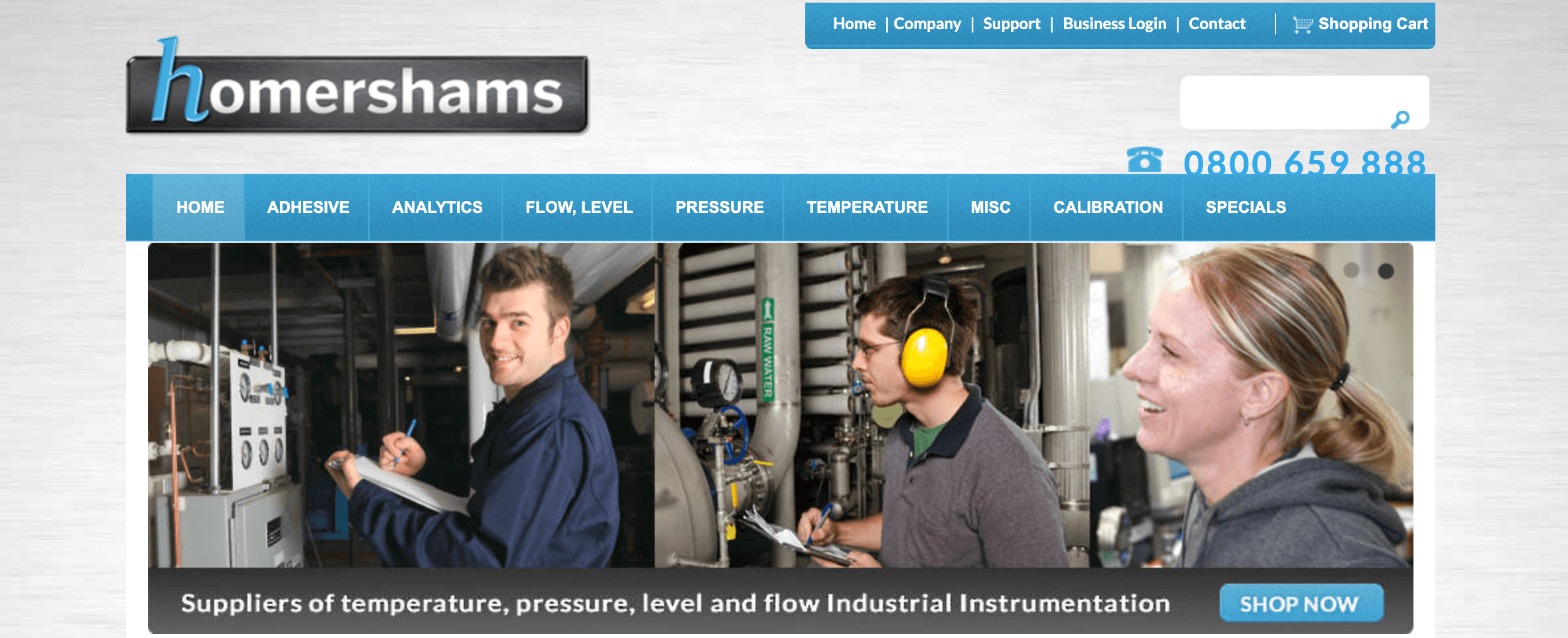Homersham Ltd has a history that spans over 70 years
Like many New Zealand businesses our story starts with the vision of one man…
1930's & 40's: The Man with the Caravan
Born in 1915, Brian Homersham was always a practical and inventive person; even from a young age he developed his own workshop to tinker in. His career began at the Christchurch Municipal Electricity Department as an electrical apprentice and went on to qualify as an electrical and mechanical engineer.
Brian’s determination to broaden his engineering experience saw him travel to The United Kingdom in 1939, despite the prospect of World War II. Ever practical, he travelled by sea and worked his passage in the ship's engine room. War broke out soon after his arrival and Brian found himself involved in the war effort in the area of ordnance at the Ministry of Supply.
In 1944 Brian’s fiancée travelled to the UK and they were married that year. At the end of WWII they toured the UK together, visiting selected suppliers in preparation for the company they intended to form on their return to NZ.
This was an arduous task as there was no established company in New Zealand nor was there a list of clients. Brian had to sell himself, the engineer, because of the technical nature of the product.
In mid 1946 within three months of their return to New Zealand, Brian and his wife formed the company B. R. Homersham Ltd (BRH), with a one room office at 82 Hereford Street in Christchurch.
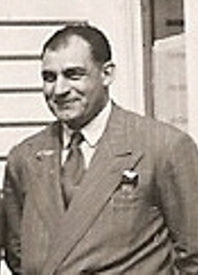
Initially cash flow was extremely tight and the company would have failed without financial help from their families. Brian's wife performed all clerical duties. To save on hotel bills, they travelled New Zealand with a tired 1938 Ford V8 sedan and caravan, visiting supply authorities by day and travelling at night, so time was not wasted. Brian soon marketed himself as “the man with the caravan”. This intrigued the UK suppliers as they could hardly imagine the nature of NZ’s small market and the distance between one potential customer and the next.
Brian promoted himself as “The man with the caravan”
With encouragement from UK suppliers who saw the potential for irrigation on the Canterbury Plains, BRH began the pioneering of large scale irrigation in New Zealand and went on to become New Zealand's leading irrigation company.
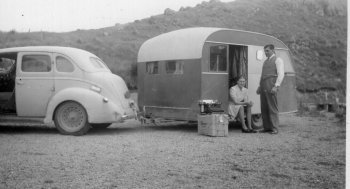
1950's: The Early Years
The 50s was a time of inflation, a taxation burden due to free social services, rising labour costs, and 20% sales tax on imported items. This did not make for easy trading conditions but fortunately at this time the power shortage and the infrastructure growth resulting from this suited the equipment sold by BRH for power electrical applications.
The early years of BRH were spent concentrating on power electrical equipment and battling the bureaucracy of importation and supply, availability, shipping delays & delays by local waterfront workers. Brian had also had a steep learning curve in the commercial and clerical requirements of running a business as there were no funds for a company secretary or accountant.
By 1951 the company had steadily prospered and a city property at 126 Victoria Street was purchased. The operations office housed administration as well as a workshop for assembly and limited manufacture.
The staff expanded to eight with the hiring of Bruce McKay as the first apprentice of BRH. Bruce spent his entire working life of 46 years with the company, playing a key role in the pioneering of large scale irrigation in NZ.
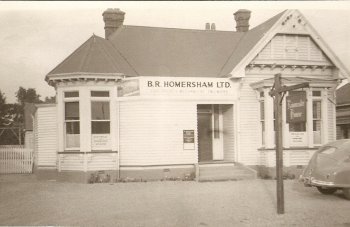
In the 1950’s BRH represented companies that sold a diverse range of turbines, presses, measuring & testing equipment, industrial batteries, line hardware, pumps and more.
To build strong business relationships, Brian built strong personal relationships with suppliers. He began his five yearly programme of overseas travel to visit suppliers and trade fairs when he would be away for three months at a time. BRH was very much a product driven company and many new ideas, sketched on the back of an envelope, came home with Brian.
BRH counted among its customers companies such as The State Hydro-Electric Dept, Ministry of Works, NZ Railways, NZ Post & Telegraph, power supply engineers, municipal electricity departments, city & borough engineers, freezing works, rubber mills, paper mills, breweries and more. There were coal shortages so special attention was given to boiler instrumentation.
Even in the 50s BRH annually tendered for projects in excess of £0.5m and some individual tenders exceeded £40,000. Between 1948 and 1951 BRH doubled its gross returns each year. By 1955 a BRH branch had been opened in Wellington to be close to the government departments that controlled import licences.
The company produced as much as it could as to import meant you needed an import licence and often a letter of support from the customer that the product was essential to their business.
Pins from countries and trade fairs visited in continuous search for quality products.
From the beginning, the diversity of products BRH represented meant it had to produce its own product guides to give to customers as literature from overseas suppliers was irregular and mostly in short supply.
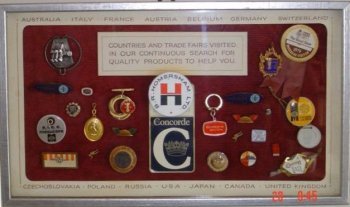
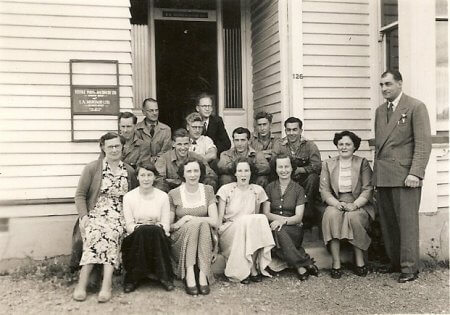
1960s: Continued Growth
By 1960 BRH had additional offices in Auckland and Wellington with representation in Dunedin.
As well as importing engineering equipment from UK they were also agents for product manufactured in USA, Australia and Europe.
Brian Homersham on left with senior management Messer’s Tattersfield and McPherson at Brian’s Arthur's Pass holiday cottage. The lack of telephones made it the ideal venue for meetings.
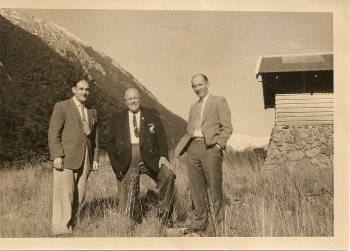
Whenever possible the manufacturing plant used components from overseas principal companies and assembled them in New Zealand as import duties and licensing were less severe. Additionally an instrument repair service was in operation and a technical advisory service was an integral part of the sales programme.
The National government of the day continued to try to balance the deficit of expenditure of imports over the amount of money earned from exports. This created the need within BRH for a team of workers to handle the effects of import licensing and to glean the best competitive advantage from these restrictions.
Post war there was a feeling within New Zealand that “British is Best” but due to expense and dated product, suppliers were starting to look further afield. In 1965 Brian first visited Japan in order to see firsthand if any economic benefits could be found trading with the Japanese. An association with several companies, including the Yokogawa Electric Corporation, resulted due to this forethought.
The company enjoyed continued growth: a General Sales Manager and a Scientific Equipment Sales Engineer were employed. In 1966 BRH introduced the first electron microscope to NZ.
By late 1967 wool prices dropped drastically and unemployment grew which resulted in the government cutting import licences by 20% that year. The company had to adapt by ensuring the timing of orders, licensing and manufacturing were kept to a minimum in order to capture their share of the licences available.
1970s: 25 Years of Progress
During the 1970’s the main trading partners for BRH were UK, Australia, USA, Japan, Europe and Italy.
As usual BRH was in tune with the modern advancements of the day and in 1970 they introduced a gamma camera with computer, the latest diagnostic tool in nuclear medicine, to New Zealand.
The 70’s especially the late 70’s was a difficult market for New Zealand companies; unions took a strangle hold on some companies and import licensing continued to be a challenge. Public spending was down & New Zealanders were asked to conserve power, which effected power equipment sales. However irrigation continued to grow.
The expanding company meant that 126 Victoria Street was now too small. Brian believed the future lay in joint manufacturing ventures with the company's principals. In 1975 the company purchased two hectares of land at 155 Roydvale Avenue, Burnside, Christchurch and moved to a purpose built 1770 square metre factory where all departments could be housed under one roof.
From this new facility the company's own award winning, low energy Turborain irrigators were trialled & sold and BRH built New Zealand’s largest commercial pump testing facility.
In 1971 the company produced an anniversary 25 Years of Progress products guide listing 83 suppliers from 11 countries, and their products. Brian's clever inclusion of 40 pages of conversion and technical tables meant the book tended stay on engineers' shelves for many years as a valuable reference volume.
The prototype Turborain irrigator is trialled at Roydvale Ave

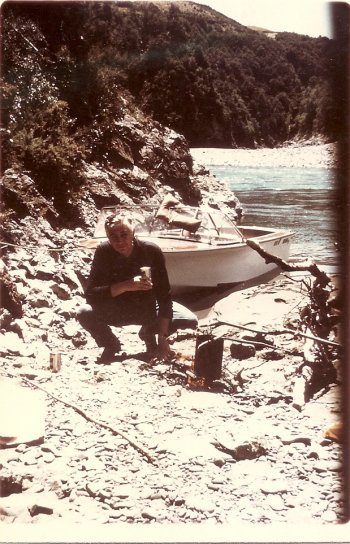
Relations with overseas suppliers were well established by this time and as well as Brian visiting Principals overseas on a regular basis, overseas manufacturers would visit BRH. Brian would regularly take overseas visitors jet boating up the Waimakariri River gorge. Green willow sticks to hold the porterhouse steaks while they cooked over an open fire, were harvested using Brian's trademark sheath knife, from the riverbank on route. The outdoor cooking was always accompanied by billy tea, giving the visitors an experience they would never forget.
As the potential for death duties to cripple a company was a concern in those days, the ordinary shareholder base was broadened to include Brian's two sons and a family trust. He still retained control of the company through his governing directorship.
Billy tea on the Waimakariri River
1980s: End of an Era
Brian had travelled the best part of 25 years to meet with & find suppliers. This ‘face to face’ contact was important to gain trust and traction. However air travel was slower than it is today and it was not uncommon for Brian to travel to over 15 countries on any one trip and to be away from NZ for months at a time.
BRH was maintaining a steady course and by the 1980s BRH had an annual turnover of more than $4million and imports were now less than third total sales. Staff numbers now exceed 70 and Homershams pressure laboratory was the first in New Zealand to be registered by Telarc.
NZ’s 1st Telarc Registered Laboratory 1985
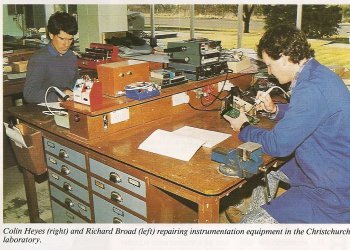
By the early 80’s BRH were renowned for the manufacture of 11KV electrical switchgear, and their diesel & electric fire pump units. Their pump testing facility was the biggest in New Zealand & could handle 184 litres per second.
The products sold included electrical power equipment, industrial electrical & mechanical products, electrical, physical & scientific instrumentation, industrial pumping plant, irrigation equipment, substation switchgear, instrument transformers, pressure and temperature gauges.
BRH were award-winning product designers, however the economic tide was turning for New Zealand manufacturers. In 1987 the stock market crashed, some investors suffered severe losses which further worsened the economic situation.
Not only were there financial troubles afoot; Brian’s death in 1983 from a brain tumour, also had a profound effect on the company.
1990s: Servicing Industry Since 1946
The Government had abolished many economic controls and removed farming and manufacturing subsidies. Fewer subsidies meant BRH products now had to compete with cheaper overseas products.
Like many companies in New Zealand, times for BRH were tough. Shares that were previously bought out were returned to the family and Brian's two sons became involved in the business. Steady progress was being made until in 1997, notice was received from Loctite Australia that in line with international policy, BRH’s master distributorship would cease.
Prior to BRH’s involvement, the NZ engineering adhesive and sealant industry was tiny. BRH sold the technology along with the brand so successfully that New Zealanders no longer asked for an adhesive they asked for Loctite – it was the industry standard.
BRH’s Loctite division was contributing a disproportionate amount of profit to the company and was responsible for keeping the company afloat during the tough times and funded the company's product development. The loss of this sole distributorship was almost unsurvivable.
BRH knew adhesives and sought out a competing product that equalled or surpassed Loctite’s technology and beat Loctite on price. The resulting association with Permabond still exists today and Permabond is now a successful brand in the NZ market.
After the loss of Loctite BRH was left with no option but to downsize again, The Auckland branch was closed while the Wellington branch had been closed several years earlier. The remaining manufacturing capability was sold off and the company moved to smaller premises in Homersham Place in the new Christchurch sub-division across the road from the Roydvale Avenue factory.
Turning adversity into opportunity; the company rebranded as Homersham's, Servicing Industry Since 1946, Instrumentation Sales & Service, Engineering Adhesives & Sealants.
New Premises in Homersham Place
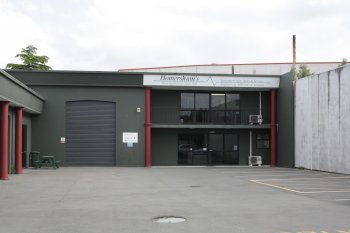
2000s: Introducing The Evans’
In 2000, it was decided to sell the business. Teltherm Instruments Ltd, who was both a customer and supplier, were approached. An amicable agreement was reached and the business changed hands in 2001 with all staff transferring. The company name became Homersham Ltd.
The new owners, Mark and Anne Evans could see Homershams was an excellent fit to their current business and appointed Joanne Atkinson who had been with Homershams for 12 years as manager.
Homershams became the South Island agent for Teltherm products and gained the New Zealand agency for Dwyer, Murphy, Center, Watlow and Honeywell ECC products.
The company remained small but profitable and their customer service remained extraordinary.

2010s: Homersham Ltd
The laboratory's calibration capability of pressure and temperature has grown to include infrared and humidity. The manufacturing component concentrates on level, float switches and temperature probes.
In 2010 Christchurch was hit by a 7.1 earthquake, followed in 2011 by two devastating earthquakes that resulted in the loss of much of the heritage buildings in the Christchurch CBD and 185 people died.
Homershams became the South Island agent for Teltherm products and gained the New Zealand agency for Dwyer, Murphy, Center, Watlow and Honeywell ECC products.
The company remained small but profitable and their customer service remained extraordinary.
Photo Christchurch Cathedral after the 2011 Earthquake
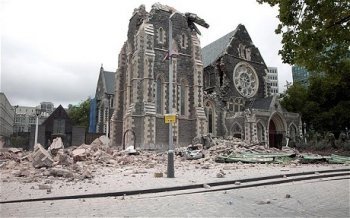
Thankfully all of the Homersham’s staff and their families survived the devastation; but the thousands of aftershocks took its toll emotionally as staff coped with the hardships of life in post-quake Christchurch.
The company rebranded in 2012 and launched the Homersham’s e-commerce website.
In September 2016 Homersham Ltd was purchased by Jason Clarke who is poised to steer Homershams successfully through the next decades.
New E-Commerce Website is Launched
Even after 70 years the staff at Homersham’s are still proud to embrace Brian Homersham’s mantra:
Customers are:
- The most important people in our business
- They are not dependent on us – we are dependent on them.
- They are not an interruption of our work – they are the purpose of it.
- They do us a favour by giving us an opportunity to serve them.
- They are not people to argue with or match wits with – nobody ever won an argument with a customer.
- People who bring us their wants. It is our job to handle them profitably, to them and ourselves.
